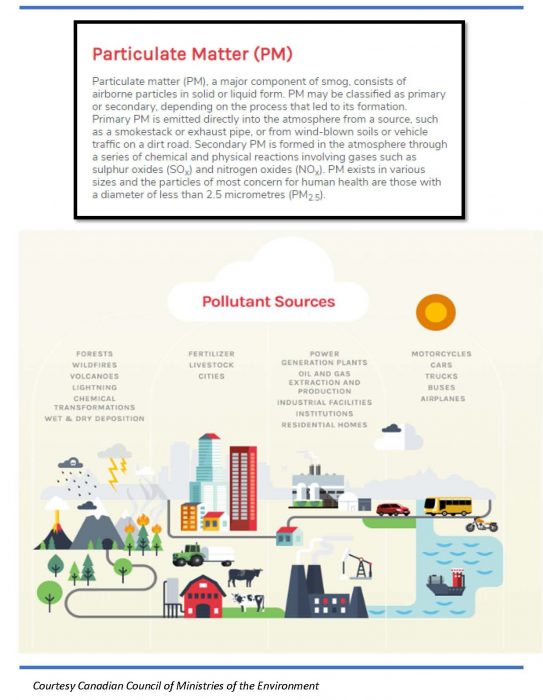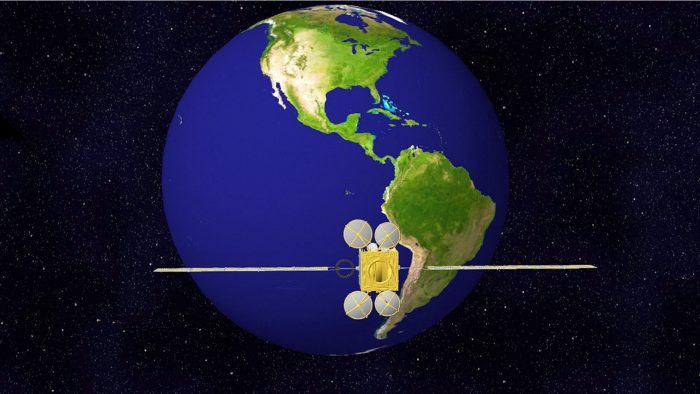Looking at air pollution from a different direction
A new study shows that even low levels of air pollution contribute to lung cancer.
Some of the lowest levels of air pollution in the world are found in the Canadian province of Ontario, which borders the United States and the Great Lakes and covers some 415,000 square miles. However, a new study has revealed that long-term exposure to even low levels of small particulate air pollution can increase the risk of lung cancer. The study focused primarily on PM2.5, airborne particles smaller than 2.5 micrometers and measuring about 3 percent the diameter of a human hair. The study was carried out by a team of Canadian and U.S. researchers and published recently in the International Journal of Cancer Outdoor PM2.5 has long been known to increase the risk of developing lung cancer. The International Agency for Research on Cancer, part of the World Health Organization, has classified outdoor particulate matter (including PM2.5) as a cancer-causing agent.

The level of PM2.5 across Ontario was derived by relating satellite remote sensing observations to surface concentrations using an air quality model in combination with ground-based monitors. PM2.5 levels were calculated for each residential postal code region of Ontario during the years 2001 to 2015.
Using data from the Ontario Population Health and Environment Cohort and the Ontario Cancer Registry, the researchers identified long-term Ontario residents ages 35 to 85 who developed lung cancer during this period. The study encompassed a total of 4,952,022 residents registered under Ontario’s provincial health insurance plan and revealed an association between patients who developed lung cancer and postal codes with the highest PM2.5 concentrations.
“Our findings show that long-term exposure to PM2.5 even at the relatively low level of exposure seen in Ontario, continues to be associated with increased risk of lung cancer,” says Li Bai, a senior epidemiologist at ICES (Institute for Clinical Evaluative Sciences) in Toronto and lead author of the study.

An illustration of TEMPO’s (Tropospheric Emissions: Monitoring of Pollution) geostationary orbital vantage point over North America. (Image courtesy Smithsonian Astrophysical Observatory)
“Because the concentrations of air pollution in Ontario are among the lowest in the world, our study constitutes a valuable opportunity to investigate the impact of air pollution on cancer risk at low levels of exposure,” Bai adds. “To the best of our knowledge this is the largest cohort study of long-term exposure to ambient air pollution and the incidence of lung cancer to date.”
According to Bai, the primary sources of PM2.5 in Ontario are residential fuel and wood burning, industry, transportation, wildfires, agriculture, biogenic secondary organic aerosol and power generation.
Under the same study, the researchers also found a strong association between the presence of the air pollutant nitrogen dioxide (NO2) in the atmosphere and lung cancer. No relationship was discovered between the presence of PM2.5 and NO2 in the atmosphere and breast cancer.
Randall Martin, research associate at the Smithsonian Astrophysical Observatory in Cambridge, Mass., and professor at Washington University in St. Louis and Dalhousie University in Nova Scotia; and Dalhousie atmospheric scientist Aaron van Donkelaar helped produce the study’s dataset of ground-level fine particulate matter by using satellite aerosol observations, in combination with an atmospheric model and available ground-based measurements.
Other organizations that participated in the study included Public Health Ontario, Health Canada, University of Toronto, University of Ottawa, McGill University and the Oregon State University.
TEMPO
TEMPO (Tropospheric Emissions: Monitoring of Pollution) is a collaboration between the Smithsonian Astrophysical Observatory and NASA to measure North American air pollution from geostationary orbit.
TEMPO consists of two parts: the Instrument Project, competitively selected by NASA from the SAO proposal, and the Mission Project, directed by the NASA Langley Research Center (LaRC).

The TEMPO instrument is kept in a clean room storage area at Ball Aerospace in Boulder, Colorado, while awaiting shipment to the Maxar Technologies satellite manufacturing facility in Palo Alto, California. (Photo courtesy Ball Aerospace)
The Mission Project provides the spacecraft, a commercial geostationary communications satellite host, integration, launch, and provision of telemetry data to SAO. The TEMPO Ground System, including the Instrument Operations Center and the Science Data Processing Center are at SAO in Cambridge.
Posted: 7 February 2020
-
Categories:
Astrophysical Observatory , Feature Stories , News & Announcements , Science and Nature







